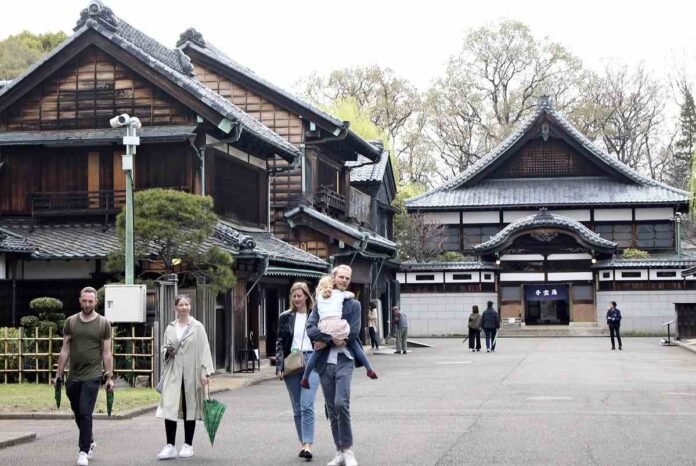Visitors walk near reconstructed traditional buildings at the Edo-Tokyo Open Air Architectural Museum in Koganei, Tokyo, early this month.
15:37 JST, April 9, 2024
The Edo-Tokyo Open-Air Architecture Museum in Koganei, Tokyo, is hosting a special exhibition to celebrate its three-decade history of moving and preserving traditional buildings.
The museum opened in March 1993 as an annex of the Edo-Tokyo Museum in Sumida Ward, Tokyo. The Museum of Architecture in Koganei Park has reconstructed 30 buildings from the Edo period (1603-1867) to the mid-Showa era (1926-89), after these buildings were demolished on their original site and moved to the park , because it was difficult to restore them to their original state. So far it has attracted about 7 million visitors.
Reconstructed buildings include the house of Korekiyo Takahashi (1854-1936), which was moved from Tokyo’s Minato Ward. Takahashi was a finance minister who was murdered in this house by young officers of the Imperial Japanese Army when they stormed it as part of an attempted coup in 1936 known as the February 26 Incident.
Another famous building is Takei Sanshodo, a stationery store that was originally built in Chiyoda Ward, Tokyo. The interior is said to have served as inspiration for a room in Studio Ghibli’s “Sen to Chihiro no Kamikakushi” (“Spirited Away”).
Also on display are thatched-roof farmhouses, along with a public bathhouse and an izakaya bar, both of which were moved from Tokyo’s old Shitamachi district.
The restored buildings evoke nostalgic feelings and take people back to another era. “I hope visitors will get a glimpse into the lifestyle of the past, as urban areas today are undergoing major, rapid changes,” said Terunobu Fujimori, director of the Edo-Tokyo Museum.

Terunobu Fujimori, director of the Edo-Tokyo Museum, discusses a special exhibition held at the architecture museum.
The special exhibition, titled “Life and Transportation in Edo-Tokyo,” runs through July 7 and features approximately 70 items from the museum’s collection.
A highlight of the exhibition is a section of a rickshaw lavishly decorated with maki-e, a lacquer art technique using powders of gold, silver and other colors. The rickshaw section, shown to the public for the first time, contains a painted image of a samurai on horseback.
This rickshaw dates from the early days of the Meiji period (1868-1912). Because rickshaws with maki-e decorations ceased to be produced after they were subject to government regulations in 1886, the rickshaw on display at the exhibition is the only example known to have survived to this day.
“When it comes to rickshaws, we usually think of rickshaws,” said a visitor from Higashi-Kurume, Tokyo. “I’ve never seen a design like this, so [the rickshaw decorated with maki-e] really interesting.”
The Edo-Tokyo Open-Air Architecture Museum is open from 9:30 AM to 5:30 PM and is closed on Mondays. For details, visit website .



